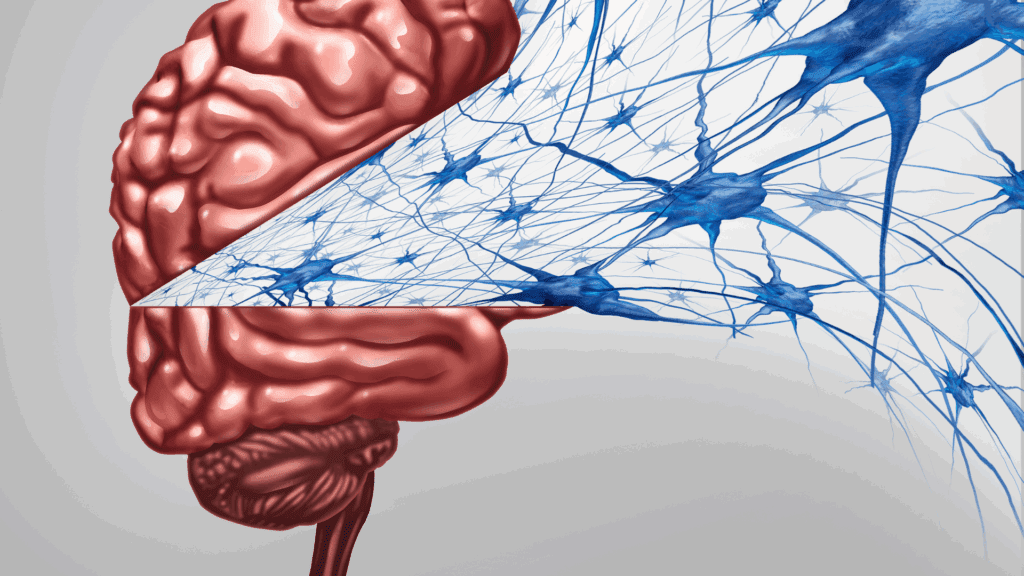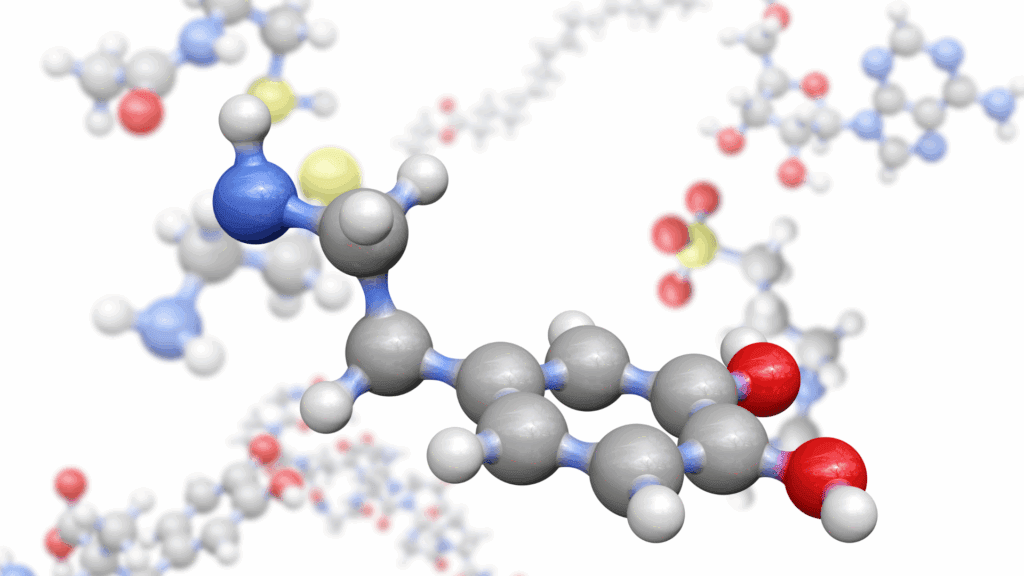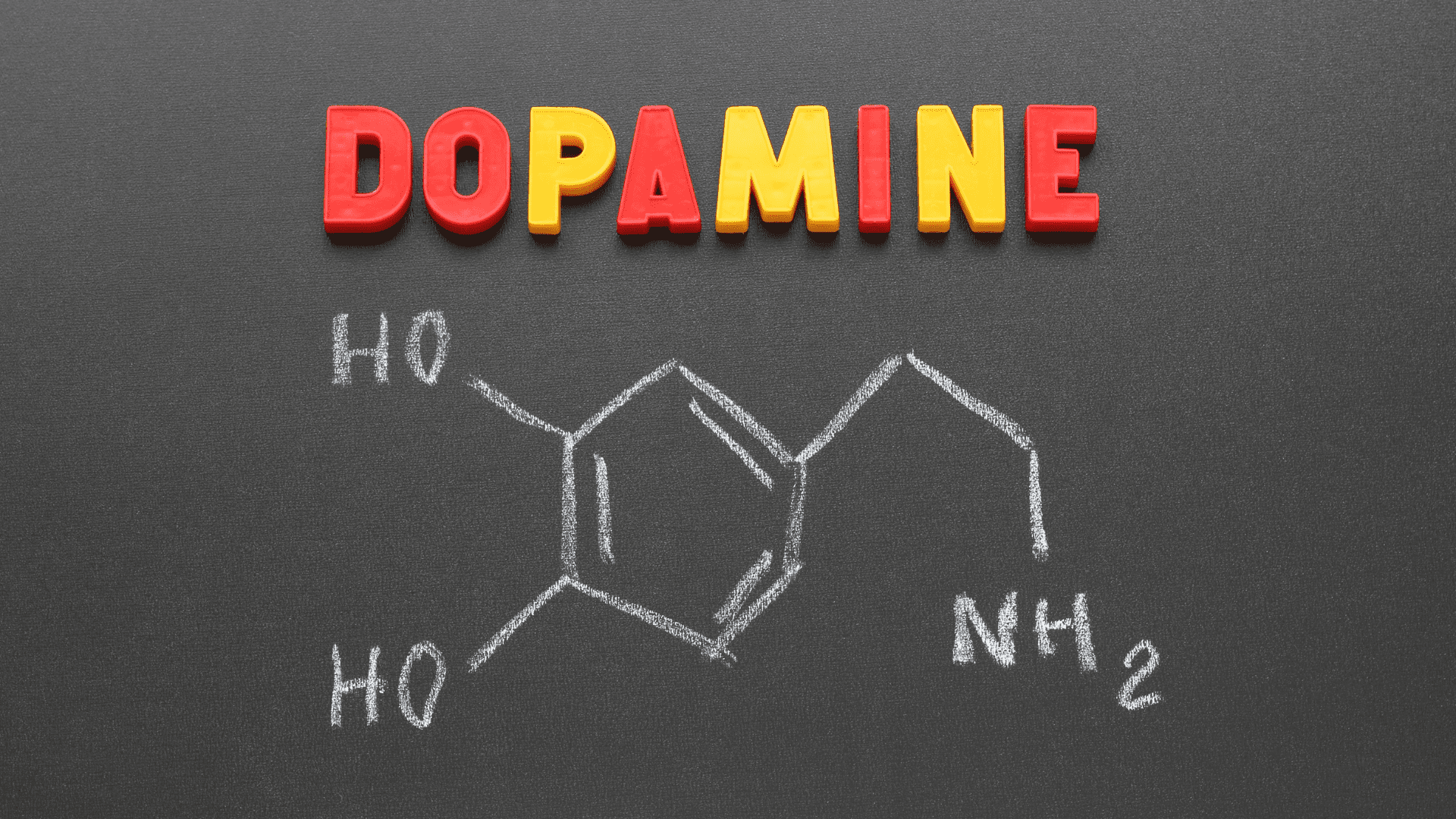Dopamine Addiction: Understanding the Brain’s Reward Trap
Have you ever wondered why it’s so hard to stop scrolling through social media, crave another snack, or find it tough to resist just one more episode of your favorite show? The answer lies deep within your brain’s reward system, powered by a chemical messenger called dopamine. While dopamine is essential for motivation and pleasure, it can also trap us in cycles of craving and compulsive behavior, which many now call dopamine addiction.
Understanding dopamine addiction isn’t just about willpower. It’s about neuroscience: how your brain’s wiring, chemistry, and habits work together to reinforce behaviors, sometimes to the point where they feel impossible to break. In this guide, we’ll explore what dopamine addiction is, how it develops, its symptoms, and—most importantly—how you can use the latest brain science to break free.
Dopamine: The Brain’s Powerful Neurotransmitter
Dopamine is a neurotransmitter—a chemical messenger that carries signals between nerve cells in the brain. Often referred to as the “motivation molecule,” dopamine plays a crucial role in how we experience pleasure, motivation, focus, and even movement. When you achieve something rewarding or anticipate a positive outcome, dopamine is released, reinforcing the desire to repeat that behavior. While this system is essential for learning and survival, it can also make us vulnerable to addictive patterns when certain activities or substances trigger excessive dopamine release. Understanding dopamine’s role as a neurotransmitter is key to unlocking the science behind both healthy habits and harmful addictions.

What Is Dopamine Addiction?
Dopamine addiction refers to the cycle where the brain becomes overly reliant on the rush of dopamine triggered by specific activities or substances. This isn’t the same as being addicted to dopamine itself—dopamine is a natural neurotransmitter vital for healthy brain function. Instead, it’s the pursuit of activities or substances that cause significant, repeated surges of dopamine that can lead to addictive behaviors.
Dopamine is often called the “feel-good” chemical, but its proper role is more about motivation and learning than pure pleasure. When you experience something rewarding, like eating a delicious meal or receiving a compliment, your brain releases dopamine. This release encourages you to repeat the behavior in the future. In healthy doses, this system helps us survive and thrive. But when certain behaviors or substances hijack this system, it can lead to a pattern of compulsive seeking and diminished control.
The Neuroscience of Dopamine and Reward
How Dopamine Works in the Brain
Dopamine is produced in a few key areas of the brain, including the substantia nigra and the ventral tegmental area. It travels along neural pathways to the nucleus accumbens, prefrontal cortex, and other regions involved in pleasure, motivation, and decision-making.
The reward system evolved to reinforce behaviors essential for survival, such as eating, socializing, and reproduction. When you engage in these activities, dopamine is released, creating a sense of satisfaction and encouraging you to repeat them. This is called positive reinforcement.
However, addictive substances and behaviors can trigger dopamine release at levels far beyond what natural rewards provide. Drugs like cocaine, nicotine, and opioids, as well as activities like gambling or excessive social media use, can flood the brain with dopamine. Over time, the brain adapts by reducing its natural dopamine production and the number of dopamine receptors, making it more difficult to experience pleasure from everyday activities.

The Brain’s Adaptation and the Cycle of Addiction
As the brain adjusts to frequent dopamine surges, it becomes less sensitive to the chemical. This is known as tolerance. You need more of the activity or substance to achieve the same feeling of reward. At the same time, natural sources of pleasure—like spending time with friends or enjoying a hobby—start to feel less satisfying.
This cycle of chasing the next dopamine hit, while feeling less and less pleasure from everyday life, is at the heart of dopamine addiction. The brain’s reward system becomes wired to prioritize addictive behavior, sometimes at the expense of health, relationships, and responsibilities.
Dopamine Addiction: Symptoms and Warning Signs
Dopamine addiction can show up in many ways, not just with drugs or alcohol. It can involve behaviors like gaming, social media, shopping, eating, or even work. Here are some common signs:
- Persistent Cravings: A strong, ongoing urge to engage in the behavior, even when you know it’s harmful.
- Loss of Control: Difficulty stopping or limiting the behavior, despite repeated attempts.
- Tolerance: Needing more of the activity or substance to achieve the same effect.
- Withdrawal: Feeling irritable, anxious, or low when you can’t engage in the behavior.
- Neglecting Other Areas: Ignoring work, school, relationships, or self-care in favor of the addictive behavior.
- Mood Swings: Experiencing highs during the activity and lows or irritability when not engaged.
- Impaired Focus and Memory: Trouble concentrating, remembering things, or making decisions.
- Reduced Reward Sensitivity: Everyday pleasures no longer feel satisfying.
It’s important to remember that dopamine addiction isn’t a sign of weakness or a lack of willpower. It’s a reflection of how the brain’s reward system has been rewired by repeated exposure to intense dopamine surges.

The Brain Circuits Involved in Dopamine Addiction
Neuroscience research has identified several key brain regions and circuits involved in dopamine addiction:
- Nucleus Accumbens: The core of the reward system, where dopamine creates feelings of pleasure and motivation.
- Prefrontal Cortex: Responsible for decision-making, impulse control, and self-regulation. Additionally, this area becomes less active, making it more difficult to resist urges.
- Dorsal Striatum: Involved in habit formation and compulsive behavior. Over time, addictive behaviors shift from being driven by pleasure to being driven by habit and compulsion.
- Orbitofrontal Cortex and Anterior Cingulate Gyrus: These areas help assign value to rewards and regulate emotions. In addiction, their function is often impaired, leading to poor decision-making and impulsivity.
Imaging studies reveal that people struggling with dopamine addiction often have lower levels of dopamine receptors (especially D2 receptors) in these regions. This means that their brains are less responsive to natural rewards and more prone to compulsive seeking of activities that trigger dopamine.
Dopamine Addiction in Everyday Life
Beyond Drugs: Behavioral Addictions
While substance use disorders are the most well-known form of dopamine addiction, many everyday activities can also become addictive. Social media, video games, shopping, and even eating highly processed foods can trigger repeated dopamine surges. These behaviors are designed to keep us engaged—think of the endless scroll on social media, the thrill of a new notification, or the excitement of a video game level-up.
Modern technology and marketing often exploit the brain’s dopamine system, making it easy to fall into patterns of compulsive use. For example, social media platforms use variable rewards (like unpredictable likes and comments) to keep users coming back for more, much like slot machines in a casino.
The Myth of “Dopamine Detox”
Recently, there’s been buzz about “dopamine detoxes”—taking a break from all pleasurable activities to “reset” the brain. While the idea is appealing, neuroscience suggests that dopamine itself isn’t the problem. Instead, it’s the repeated, excessive stimulation of the reward system that leads to addiction. Sustainable recovery is about building healthier habits and restoring balance, not eliminating dopamine.

The Impact of Dopamine Addiction on Mental and Physical Health
Dopamine addiction doesn’t just affect pleasure and motivation. It can have wide-ranging effects on mental and physical health:
- Mood Disorders: Chronic dopamine dysregulation is linked to depression, anxiety, and mood swings.
- Cognitive Impairment: Memory, focus, and decision-making can all suffer as the brain’s circuits are rewired by addiction.
- Anhedonia: The inability to feel pleasure from everyday activities is common after prolonged dopamine addiction.
- Sleep Problems: Disrupted sleep patterns often accompany addictive behaviors, further impacting brain health.
- Physical Health: Substance-based addictions can damage organs, while behavioral addictions can lead to neglect of exercise, nutrition, and self-care.
Why Is Dopamine Addiction So Hard to Overcome?
The challenge of breaking free from dopamine addiction lies in how deeply it rewires the brain. Over time, the brain becomes less responsive to natural rewards and more sensitive to cues associated with the addictive behavior. This makes cravings feel overwhelming and relapse common.
Additionally, the prefrontal cortex—the part of the brain responsible for self-control—becomes less active in addiction, making it harder to resist urges. Stress, negative emotions, and environmental triggers can all reactivate the reward system, pulling you back into old patterns.
How I Help Clients Break Free from Dopamine Addiction
As a neuroscience-based coach, my work with clients who struggle with dopamine-driven habits is deeply personalized, science-backed, and focused on creating real, lasting change. I don’t believe in one-size-fits-all solutions or endless cycles of talk therapy. Instead, I use the latest insights from neuroscience and neuroplasticity to help you rewire your brain, reshape your habits, and reclaim your life, freeing you from the dopamine theory of addiction.
Personalized Assessment and Brain-Based Goal Setting
Every client’s journey begins with a thorough assessment of their unique brain blueprint, life story, and behavioral patterns. We explore not just what you want to change, but why these dopamine-seeking behaviors took root in the first place—whether it’s stress, emotional triggers, or ingrained habits. This clarity allows us to set specific, meaningful goals that align with your values and aspirations.
Customized Strategies for Rewiring Habits
Using the science of neuroplasticity, I design a tailored plan to gradually shift your brain’s reward system away from compulsive, dopamine-driven behaviors and toward healthier, more fulfilling pursuits. Together, we identify your triggers and replace old patterns with new, positive routines—whether that’s building a mindful morning practice, engaging in creative activities, or strengthening social connections. My approach leverages your brain’s natural ability to form new neural pathways, making change not only possible but sustainable.
Real-Time Support and Accountability
Transformation doesn’t happen in isolation. I provide ongoing, real-time support so you’re never left to navigate setbacks alone. This immediate guidance interrupts old behavioral patterns as they arise, helping you make empowered choices in the moment. With regular check-ins and honest feedback, you’ll stay accountable and motivated as you build new habits and celebrate progress.
Emotional Intelligence and Self-Reflection
A core part of my process is helping you develop deep emotional intelligence—understanding your own emotions, managing impulses, and building resilience. Through guided self-reflection, you’ll learn to recognize the emotional drivers behind your behaviors and cultivate healthier responses to stress or discomfort. This emotional mastery is key to breaking free from the cycle of dopamine-driven habits.
Holistic Lifestyle Optimization
Lasting change requires a holistic approach. We work together to optimize all areas of your life that impact brain health and dopamine balance—sleep, nutrition, exercise, and meaningful relationships. By nurturing your body and mind, you create a strong foundation for resilience and well-being, making it easier to resist old temptations and embrace new, rewarding experiences.
Empowerment Through Neuroscience
What sets my coaching apart is the integration of cutting-edge neuroscience with practical, actionable strategies. I teach you how your brain works, why you feel compelled to repeat certain behaviors, and how you can harness neuroplasticity to your advantage. This knowledge empowers you to become an active participant in your transformation, rather than feeling at the mercy of your impulses.
Sustained Growth and Lifelong Change
My goal is not just to help you break a habit, but to equip you with the tools and self-awareness needed for lifelong growth. As you progress, we adapt your plan to new challenges and opportunities, ensuring that the changes you make are deeply rooted and enduring. My commitment is to your independence and success, not to keeping you in coaching indefinitely.
In summary, my neuroscience-based approach to dopamine addiction is compassionate, individualized, and grounded in the latest brain science. By combining personalized assessment, habit rewiring, emotional intelligence, real-time support, and lifestyle optimization, I guide clients to break free from compulsive patterns and create a life of balance, fulfillment, and authentic joy.

Neuroscientific Strategies for Overcoming Dopamine Addiction
Breaking the cycle of dopamine addiction is possible, but it requires a combination of self-awareness, neuroscience-backed strategies, and often, professional support. Here’s how you can start:
- Understand Your Triggers
Keep a journal to track when and why you feel the urge to engage in the addictive behavior. Are you bored, stressed, lonely, or seeking comfort? Understanding your triggers helps you develop alternative coping strategies. - Rewire Your Brain with New Habits
Neuroplasticity—the brain’s ability to change and adapt—means you can build new, healthier pathways over time. Start by replacing addictive behaviors with positive, rewarding activities. This could be exercise, creative hobbies, social connection, or mindfulness practices. - Practice Mindfulness and Self-Compassion
Mindfulness helps you become aware of cravings without acting on them. Self-compassion reduces shame and guilt, which can otherwise fuel the cycle of addiction. Techniques such as deep breathing, meditation, and grounding exercises can help calm the brain’s stress response. - Gradual Reduction and Consistency
Instead of quitting cold turkey, gradually reduce the frequency and intensity of the addictive behavior. Consistency is key—repetition helps the brain form new habits and weaken old ones. - Seek Social Support
Connection with others is a powerful antidote to addiction. Share your goals with friends, family, or support groups to gain encouragement and motivation. Social interaction naturally boosts dopamine in healthy ways and provides a sense of accountability. - Restore Natural Rewards
Reintroduce activities that bring genuine satisfaction, even if they don’t feel rewarding at first. Over time, the brain’s sensitivity to natural pleasures—like nature, music, or meaningful work—can be restored.
The Role of Genetics and Environment
Not everyone is equally vulnerable to dopamine addiction. Genetics, early life experiences, and environmental factors all play a role. Some people may have fewer dopamine receptors or a naturally less responsive reward system, making them more prone to seeking intense stimulation.
Trauma, chronic stress, and social isolation can also increase the risk. Understanding your unique risk factors can help you approach recovery with greater self-awareness and compassion.
Building a Healthier Relationship with Dopamine
Dopamine isn’t the enemy—it’s a vital part of what makes us motivated, curious, and alive. The key is balance. By understanding how dopamine addiction works, you can make conscious choices to nurture your brain, build resilience, and create a life filled with genuine satisfaction.
Remember, recovery is a journey, not a destination. Each small step you take to break the cycle of compulsive behavior helps your brain heal and grow stronger. With patience, support, and the power of neuroscience, lasting change is within reach.
Final Thoughts
Dopamine addiction is a powerful force—but it doesn’t have to define your life. By understanding how your brain’s reward system works and applying science-backed strategies, you can interrupt compulsive patterns and rediscover joy in everyday moments. Whether it’s substance use, screen time, or another self-sabotaging habit, know this: your brain is wired for change.
If you’re ready to work with your brain—not against it—NeuroDrive: Personalized Dopamine Optimization offers a customized, neuroscience-based path to rebuild motivation, restore focus, and reclaim control. Your transformation starts now.
#dopamine #dopamineaddiction #neuroscience #brain #mentalhealth #addiction #recovery #motivation #wellness #mentalhealthawareness #habits #science #mindset #selfcare #emotionalhealth #stressmanagement #neuroplasticity #behavior #reward #digitaladdiction #focus



